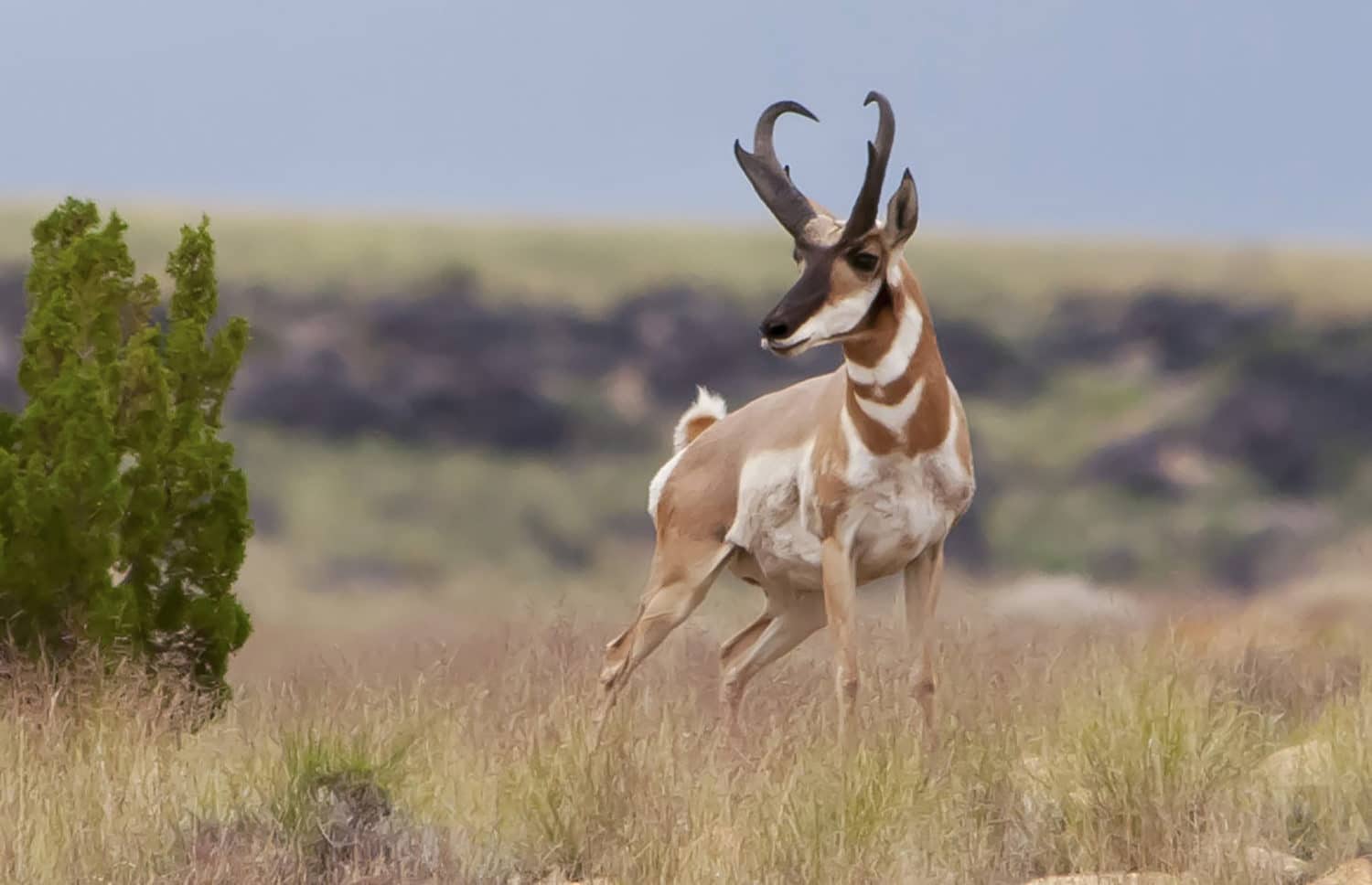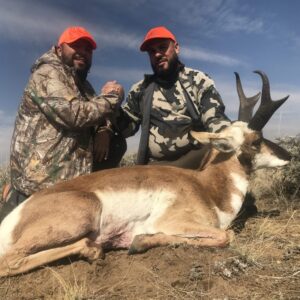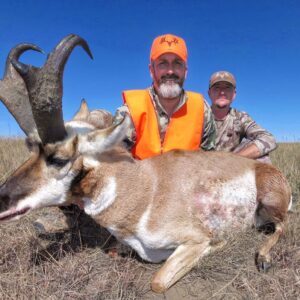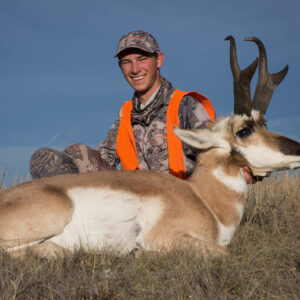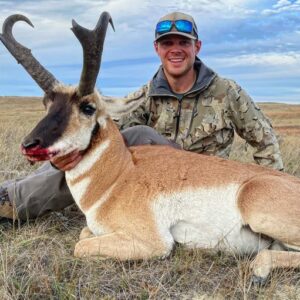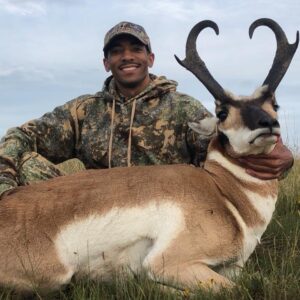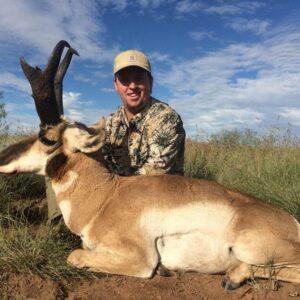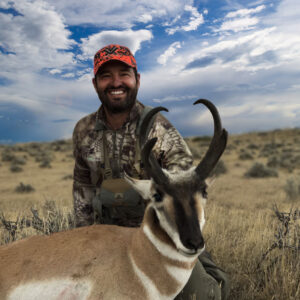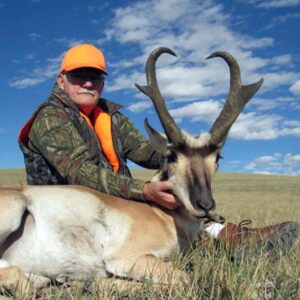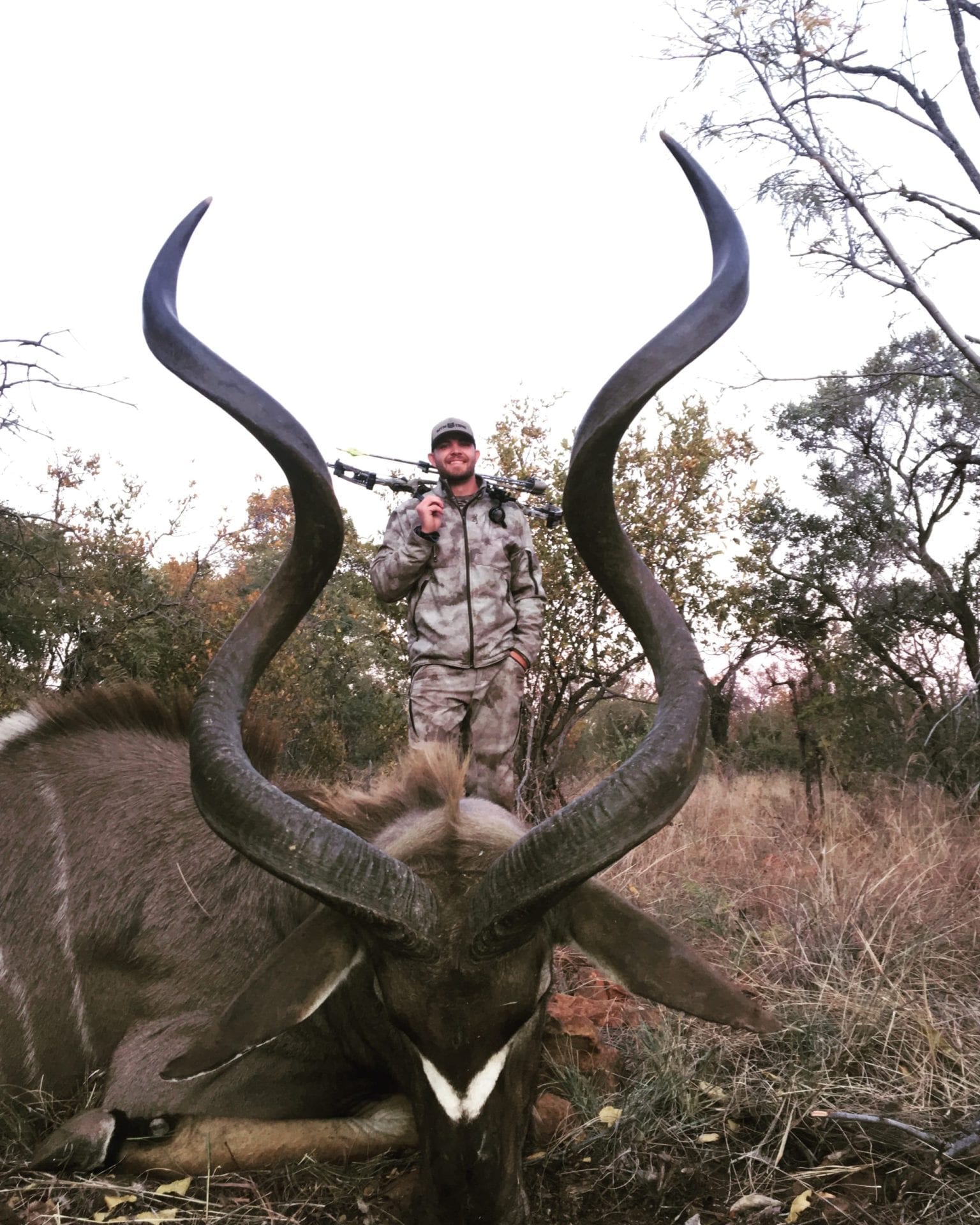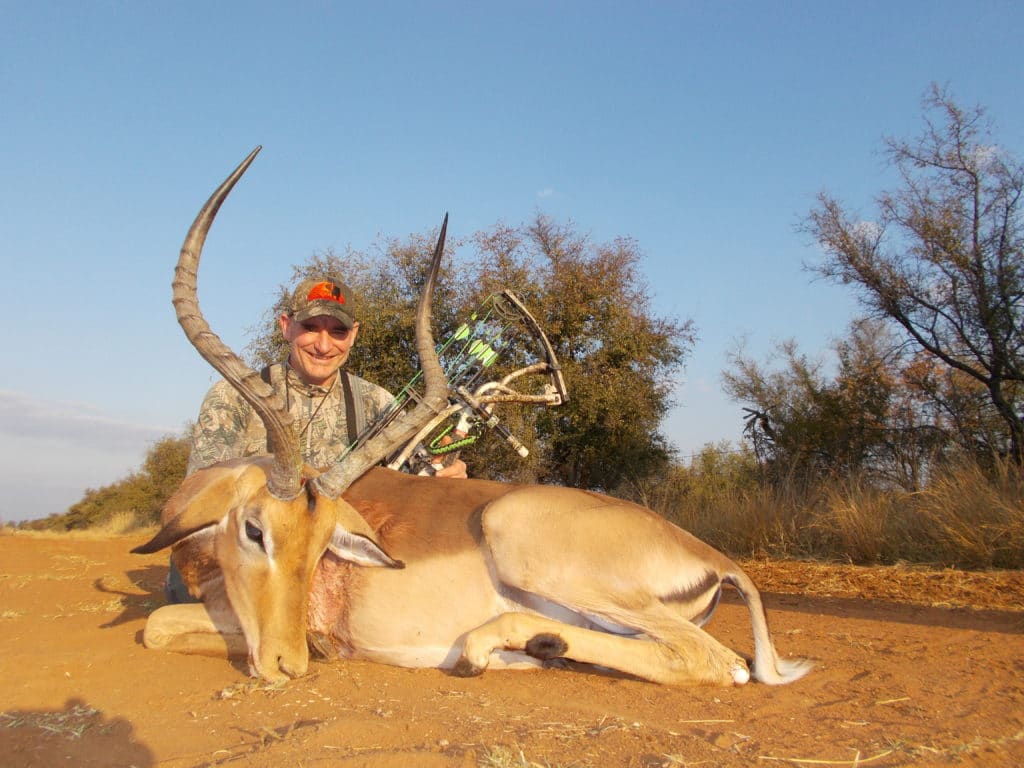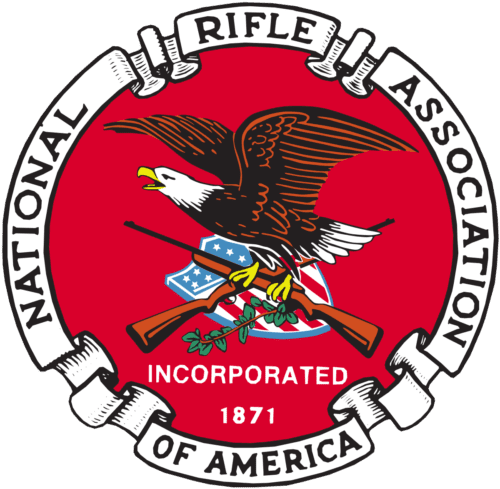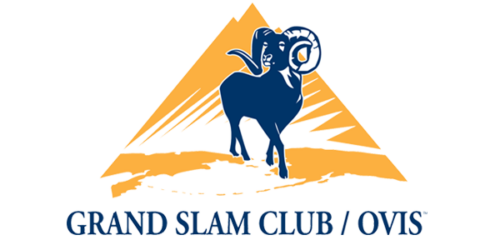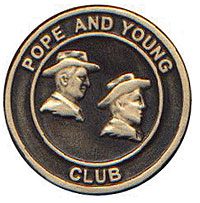Field judging pronghorn antelope can be extremely difficult to judge on the hoof. There are sometimes exceptions to the rule, of course. If you see a buck that is between 80-90 inches, there will be no doubt that he is a shooter. There are four things to look for when field judging pronghorn. Look at the height (or length) of the horn, the mass (above and below the prong), the prongs and amount of curl at the tips.
Tips for Field Judging Pronghorn
I like to use the ears to help me when field judging pronghorn antelope.
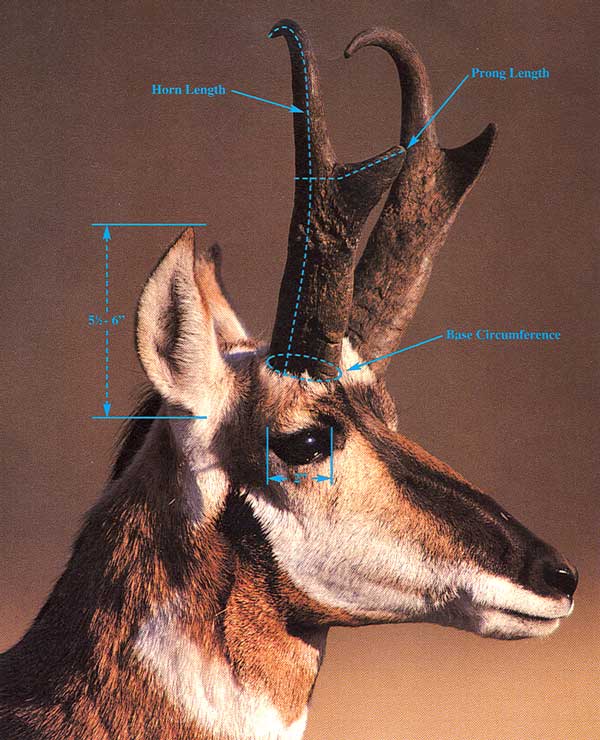 Use the ears to find out the approximate length of the horn. A pronghorn has ears that are about 5 1/2 – 6 inches in length. When you find one with horns about two and a half times the length of the ears, he’s a good one. Most pronghorn antelope hunters ONLY judge a buck by horn length. This is a mistake, though, because length is only part of what makes an antelope score.
Use the ears to find out the approximate length of the horn. A pronghorn has ears that are about 5 1/2 – 6 inches in length. When you find one with horns about two and a half times the length of the ears, he’s a good one. Most pronghorn antelope hunters ONLY judge a buck by horn length. This is a mistake, though, because length is only part of what makes an antelope score.
Use the eyes to judge mass and length of prong.
If the base of the horn from the side is twice as wide as the eyes, which are about 2 inches across, that’s a good start. Then I look for a prong that looks to be about 2 1/2 – 3 times as wide as the eyes, and mass right above the prong almost as wide as the eye.
The 4 x 7 Rule for Field Judging Pronghorn
There’s the 4 x 7 rule used by the Eastmans. This rule tells you to look for: seven inch bases; seven inch D2’s; seven inch prongs; and a combined seven inches between the D3 and D4 measurements. Plus fifteen inch horns. This is a great way to get an idea of whether or not you’re looking at a trophy.
He might be a Booner if he meets all these requirements.
If he’s really big, you’ll know. And if you find that you’re trying to convince yourself that he’s big enough, he probably isn’t.
The Boone and Crockett Scoring System
Theodore Roosevelt and George Bind Grinnell founded the Boone and Crockett Club in 1887 with the intention to promote the conservation and management of wildlife and its habitat. The Boone and Crockett Club uses length of horn, length of prong and four mass measurements.
- To find the length of horn, measure along the outside curve of the horn. Measure along the center of the outer curve from the tip of the horn to the bottom of the center of the base as viewed from the side.
- The length of the prong is measured from the tip of the prong and then along the top edge of the outer side of the horn to a place on the back of the horn.
- Then there are the mass measurements. There are four different measurements starting at the base. In order to figure out where the measurements are to be taken, the length of the longest horn needs to be divided by four. With the first measurement being at the base, the second measurement takes place a quarter of the way up. If the prong interferes with the second measurement, then it is taken right below the swelling of the prong. And if the third measurement falls anywhere in the swelling of the prong, the measurement is taken right above the prong. Even though most people look at length first when field judging pronghorn, mass is the most important. Mass usually accounts for about 49 percent of the total score of an antelope. Length is about 38 percent of the score, and prongs about 13 percent.
Live Like You Mean It
Contact Us
We've helped thousands of OI clients plan their adventures
Our team of professional consultants are ready to help you research, book and plan an amazing trip with one of our amazing outfitter partners around the world.
I didn't think an experience like this was possible.
This trip, was, for me at least not just a trip, for me it was a real adventure, a real experience. I love the wilderness and this trip afforded me the opportunity to connect with the Alaskan wilderness in ways very few people do. It was an experience I will never forgot in a place I can’t wait to get back to.Oliver Fischer
The outfitter handled everything perfectly.
We were thankful that Outdoors International hooked us up with a great outfitter because they were able to find us an acceptable alternate on short notice. Overall the two year process to get this float in was seamless and worry free. Just like it should be.Thank you, Stan Masneri
What an amazing experience!
The lodge was out of this world! Our rooms, the delicious food, the incredible wildlife and the scenery were amazing. Our photo safari guide was truly exceptional and had us on animals almost constantly. We saw over 30 different species and had some incredible up close experiences. Africa is amazing!Scott Navares
Copyright 2005-2025 © Outdoors International™ · All Rights Reserved.


